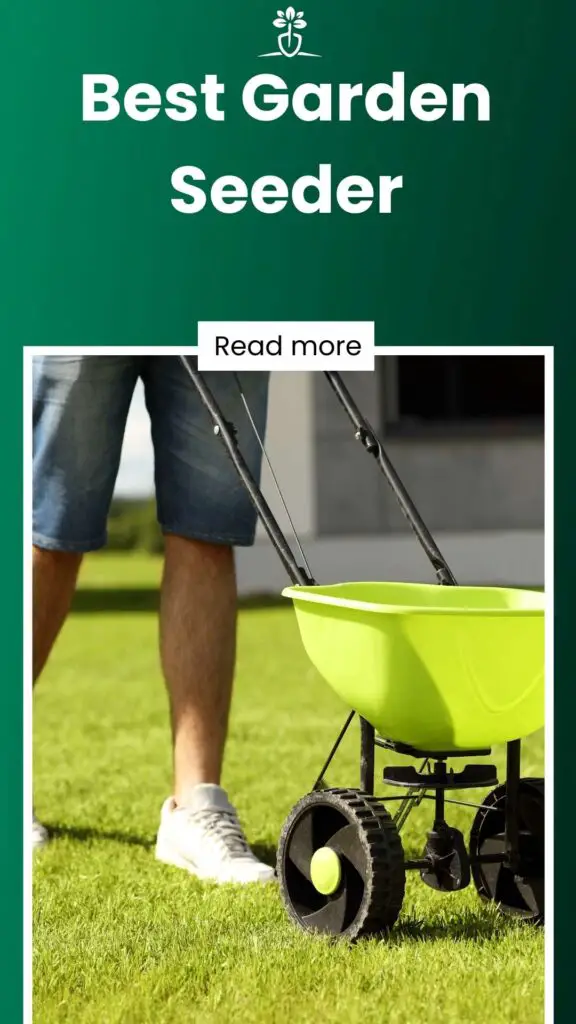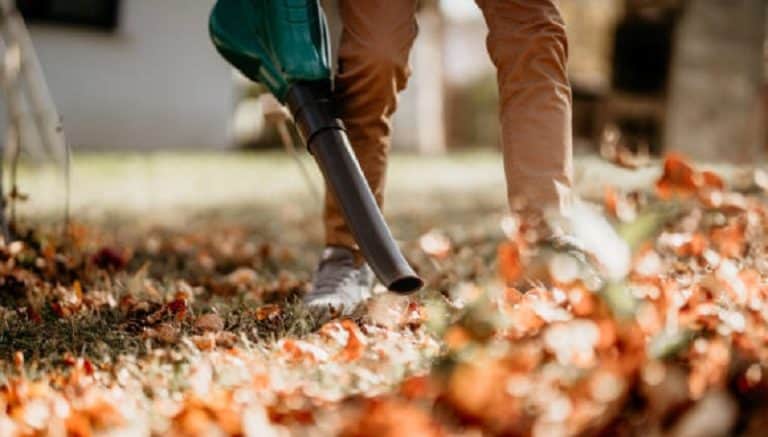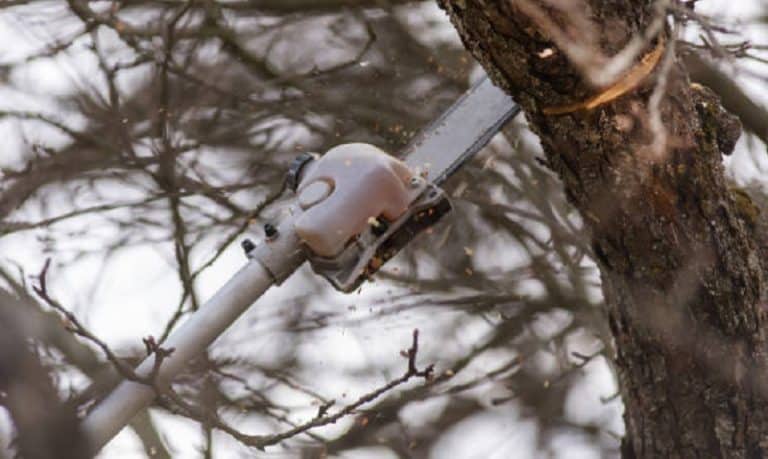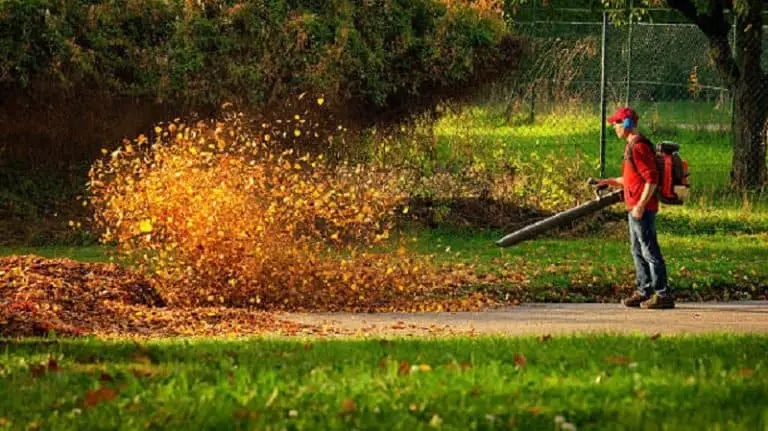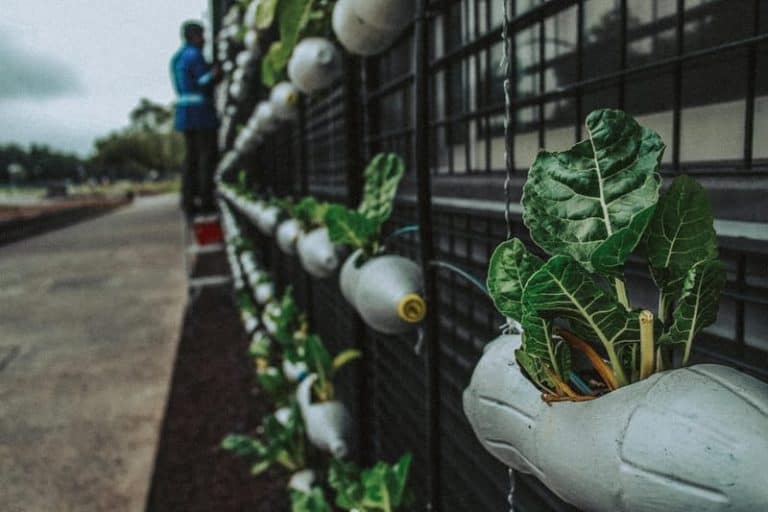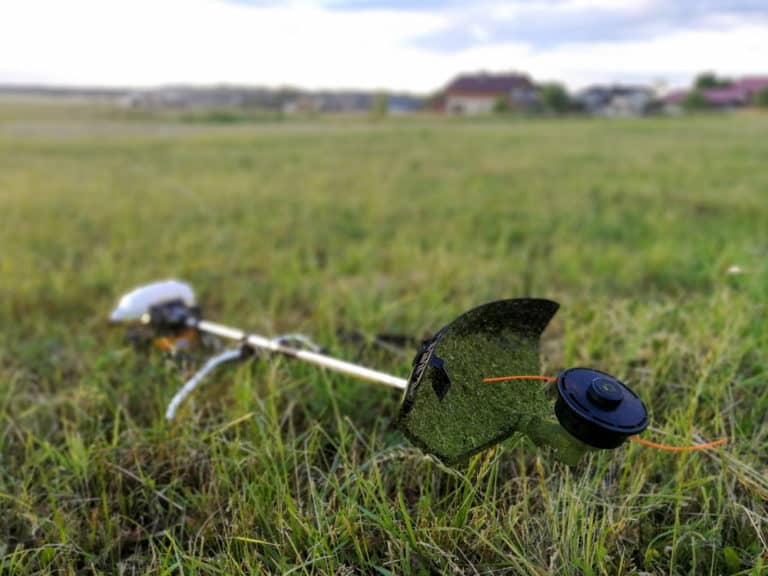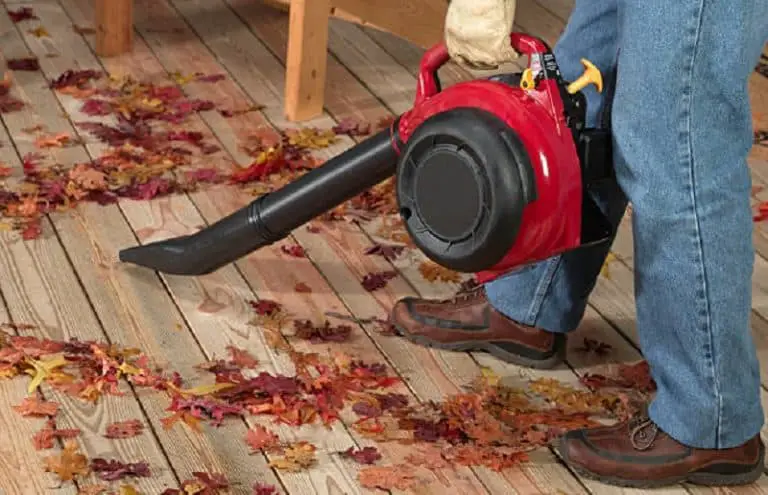Best Garden Seeder
With garden seeders, the gardening process is significantly streamlined and efficiency is improved. These tools eliminate concerns about achieving the right depth, suitable seed spacing, and figuring out the amount of seeds to place in each spot. They deliver precision and for an added advantage, they eliminate the need for bending, making horticulture a more enjoyable chore. Additionally, they enable you to efficiently manage expansive areas.
Garden seeders range from simple tools that you can build yourself, to the commercial ones that come with all the necessary features. We have reviewed some of the top seeders in the market today. Before making that investment, please check them out, as well some factors that you should consider.
Our Top Picks:
The Chapin allows you to be extremely precise in your seed placement.
This cheaper option from Scotts doesn’t have the precision of the Chapin but is great if you are looking for a scattered approach.
Contents
Best Garden Seeder Reviews
1. Chapin 8701B Garden Seeder
Key Features
- It has a powder-coated steel frame.
- It comes with six trays that are easy to interchange, and you can also purchase more plates.
- It features a 30-1nch wheel, a row marker, and a wider back wheel.
- It also features a T-shaped cushioned grip.
- Seed covering is through a flap.
The Chapin 8701B is another convenient but straightforward garden seeder. It’s designed to last for a long time, and it can work with several seed plates. They have also eliminated the seed skipping problem you may experience in the Earth 1001-B.
Why we like it
- The cushioned hand grip makes it easier to use for a long time and protects you from strains when you hit obstacles.
- The wider back wheel is more effective in ensuring a compact soil above the seed.
- The six trays allow you to plant twenty different types of seeds.
- It also features a kickstand that keeps it upright when you’re not using it.
- The row marker ensures uniform planting minimizing seed wastage, and ensuring maximum crop production.
What we don’t like
- The handle is not adjustable. This may be a problem, especially in areas where you need to use a lot of force to make the furrow.
- There are cases where the plates fail to work, or even dispense a lot of seeds than they’re required.
Our Verdict
This is a light-duty garden seeder, and it has the necessary functionality for its price. However, its structure may not work on hard soil, so make sure you till the land first before using the planter.
2. Scotts 75902 Seed Spreader
This is a great budget option for spreading seeds. It doesn’t have the precision of the first option but it will allow you to spread seeds over a large area.
3. Earthway 2150 Even Spread Garden Seeder
Key Features
- It features the Earthway’s EV-N-SPRED technology that ensures you spread the seeds evenly.
- It features two pneumatic tyres.
- It also features a telescoping handle.
- The hopper is also made of high-quality plastic.
Earthway 2150 is not a typical garden seeder. Unlike most that have small trays, it has a plate capacity of 50 pounds. It also acts as a broadcast spreader that you can use for other purposes on your lawn.
Why we like it
- The pneumatic tyres are ideal for uneven terrains since they absorb most of the shock.
- It also features a gearbox that prevents the seeds from getting stuck.
- The gears allow you to control the rate of dispensing the products which work well with the 3-hole even spreading mechanism.
- The adjustable handle accommodates people of different heights.
- The plastic hopper is durable and safe for use with all types of seeds.
- It also features a sturdy steel frame that can handle up to 175 pounds of weight.
What we don’t like
- The assembling instructions are hard to follow.
- There are cases where you may not receive all the parts. Earthway’s updated this model, and you may find the older model in some stores.
Our Verdict
This tool is ideal for commercial planting and spreading. If you don’t want to deal with interchanging the seed plates, or the seeds getting stuck, this seed planter suits you.
4. Earthway Precision Garden Seeder
Key Features
- It features an aluminum frame while the hopper, seed plates, and wheels are all plastic.
- It comes with six seed plates that you can interchange based on the size and type of seeds. You can also purchase extra plates separately.
- It also features a row marker.
This garden planter has always been a favorite for most farmers. Having been in the business for a longer time than the other companies, Earthway has perfected their craft in manufacturing high-quality gardening tools.
Why we like it
- It automatically applies the appropriate spacing based on the seed plate you’re using.
- You can also adjust the depth based on the plants’ requirements.
- The row marker marks ahead, maintaining straight rows as you plant.
- The aluminum and plastic structure rust is weather resistant.
What we don’t like
- It tends to skip seeds, especially if they are tiny. Some of them get stuck, crushed, or jump out of the plate when you hit a bump.
- You also can’t customize the plates.
Our Verdict
It is a convenient garden seed planter for small scale to medium-scale farmers. However, commercial farmers who would love to have more control over the seed plates may have to look for other heavy-duty options.
5. Hoss Garden Seeder
Key Features
- It features Amish-crafted handles.
- It also features a powder-coated steel frame and 15-inch steel wheels.
- There are at least 13 seed plates that you can work with on this tool.
- There are also customizable plates if your seeds don’t fall in the other categories.
- It features a plastic hopper and a disc coulter for making the furrows.
- It also features a drag chain next to the back wheels.
- It also comes with a row marker.
This is a versatile garden seed planter that features several plates that are convenient for different types of plants. It also ensures precision when planting.
Why we like it
- The Amish-crafted wood handles and the steel frame make it a very durable garden seeder.
- The 13 seed plates and adjustable plant spacing makes this tool applicable in a wide variety of farms.
- It has a simple and effective mechanism where the disc coulter makes the farrow. The seed plate drops the seeds, the drag chain covers the seed with soil, and the back wheel compacts the ground.
- The seed plates also minimize overplanting.
What we don’t like
- The hopper is quite small. If you’re planting on a large piece of land, you may have to do a lot of refilling.
Our Verdict
The simple mechanism makes it easy to handle seeds of different sizes, regardless of the size of your farm. The customizable plates are even better, especially if you run a commercial farm.
How to Choose the Best Garden Seeder
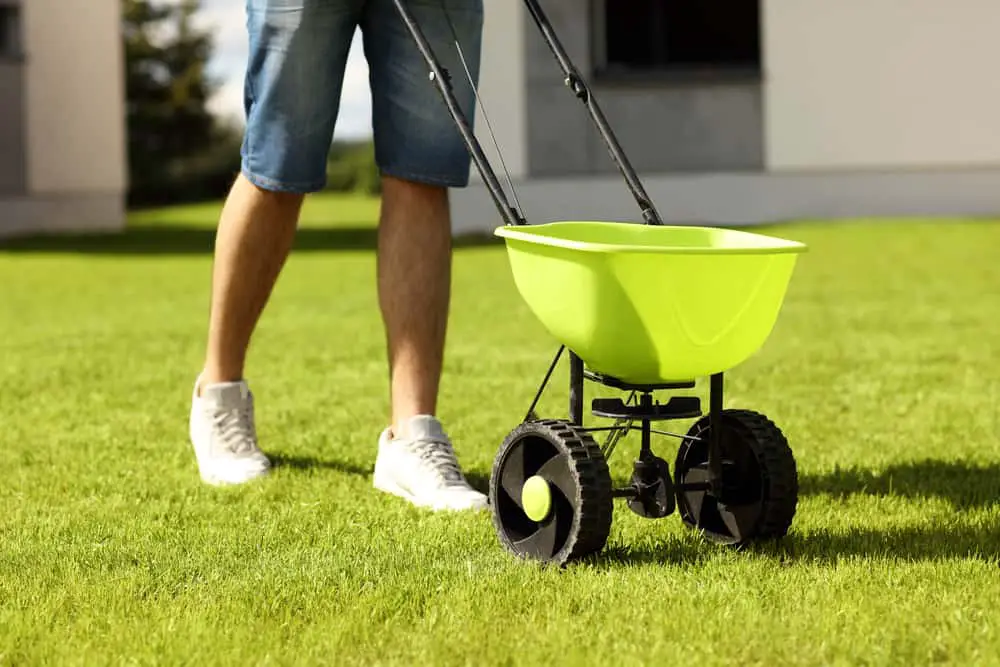
Garden seeders vary in sizes, shapes, and functionality. We may have inclined towards walk-behind seeders, but there are others that you may consider for specific uses. Below are some types of seeders in the market today.
Push Seeders
Push Seeders are also known as walk-behind seeders. Just like the name suggests, they often have two wheels and you push them from behind as they drop seeds and cover them with soil. They are the most common and quite convenient for general usage.
Pull Garden Seed Planter
These are also known as tow-behind seeders. They are often attached to tractors and ATVs and pulled around the garden. They are the best if you have a huge piece of land.
Jab Planter
Jab planters may also be referred to as stab planters. It’s merely a long tube with seed metering functions. So you press the ground and release the seeds. Some have an extension that allows you to apply the appropriate spacing. The covering of the seeds and compacting has to be done manually. That’s why walk-behind planters are still the best solution.
Below are some factors to consider when buying a seed planter;
- Size of the hopper – The hopper is the container that holds the seeds before they are dropped into the farrow. The larger the farm is, the larger the hopper you will need.
- The types of seeds – Different seeds require different planting depths and different spacing. The seeder you choose should meet the requirements of the plants. Since most of them have adjustable trenches and interchangeable plates, you need to check if your plants are covered in the design.
- Functionality – For simple planting activities, a simple planter will do. Commercial activities require customizable seeders, which are also durable. For instance, not all seeds may be covered in the design, and you may need to customize the plates to fit the specific plants. The seeder should allow that. You also need to check your type of soil and your tilling style. The harder the ground, the more robust tool you will need.
- The size of the farm – As your farm gets larger, the more specialized the seeder will need to be. For instance, the wheels and the handles should be comfortable to use. If the farm is too large, you can also opt for the tow-behind seeder.
- Versatility – You need to consider whether you may need more than just a planter. You may need to spread fertilizer, remove weeds, or even loosen the ground if some areas aren’t properly tilled. If you need more features, go for a tool that accommodates these attachments without compromising on the functionality.
Frequently Asked Questions (FAQs)
1. How does a Garden Seeder Work?
Garden seeders include two wheels, a seed plate, a hopper, a trench, and a mechanism for covering the soil after dropping the seeds. The front wheel is connected to the seed plate attachment. So every time the wheel turns, it turns the seed plate. The seed plate then scoops the seed and places it in a slip or an opening that leads to the created furrow. The numbers of seeds dropped depend on the tray you’re using.
The trench creates the furrow. Some seeders use a disc coulter as the trench, but many other tools can be used. After placing the seeds, there’s a mechanism to cover the seeds with soil. This could be a chain drag or a flap. The back wheel then compacts the soil after covering the seed. Some seeders also feature a row marker that marks the next row, making sure you maintain straight lines.
2. How do I Prepare my Garden for Seeding?
First, you should check the health of your soil. Check the pH, nutrients levels, and soil structure. If any of these aspects are affected, there are many ways to fix it. Adding organic matter can improve the soil’s structure as well as the pH. Secondly, you should till the land. Tilling makes it easy to create furrows where you need to place the seeds. How deep you’ll dig should be determined by the crops you want to grow. You can also add some water if the moisture levels are too low.
3. How do You Make a Seed Planter?
You can make a simple or a complex seed planter from recycled materials around your home. One of the simplest forms of a seeder is using a PVC pipe. If you always find it hard to bend when planting, you can cut a PVC pipe based on your height and drop the seeds through the opening, and they will fall right into the furrow.
You can take it up a notch and add a spacer. You do this by using a T-connector to attach a smaller pipe that matches the appropriate spacing for the seeds you’re planting. For instance, you can cut a 6-inch pipe when planting corn. So after you drop the seeds, you can accurately determine where to drop the next. If the diameter of the tube is too small, you can attach a funnel, or split bottle that also works like a funnel.
Final Thoughts
In conclusion, the Hoss Garden Seeder is one of the top seeders in the market today. As mentioned earlier, Hoss has been in the business of farm equipment for a long time, giving you more reason to trust their products.
The company did its best to create a more versatile tool by including 13 trays to handle several sizes of seeds. Some of the plates can also be customized to meet specific needs. This seeder also features a disc coulter that can make furrows in different types of soils.
The chain and back wheel also ensure that the seeds have enough soil and the appropriate compacting to prevent it from being carried away by the wind. It’s also durable thanks to the powder-coated steel frame and wooden handles. The hopper may be smaller than in most models, but most customers confirm that they still managed to use it as it is on larger farms.
